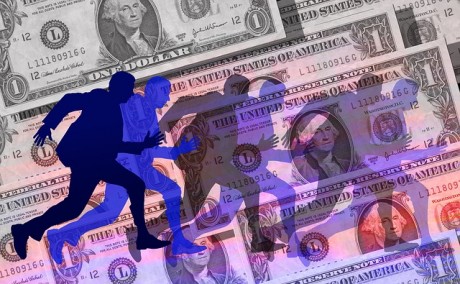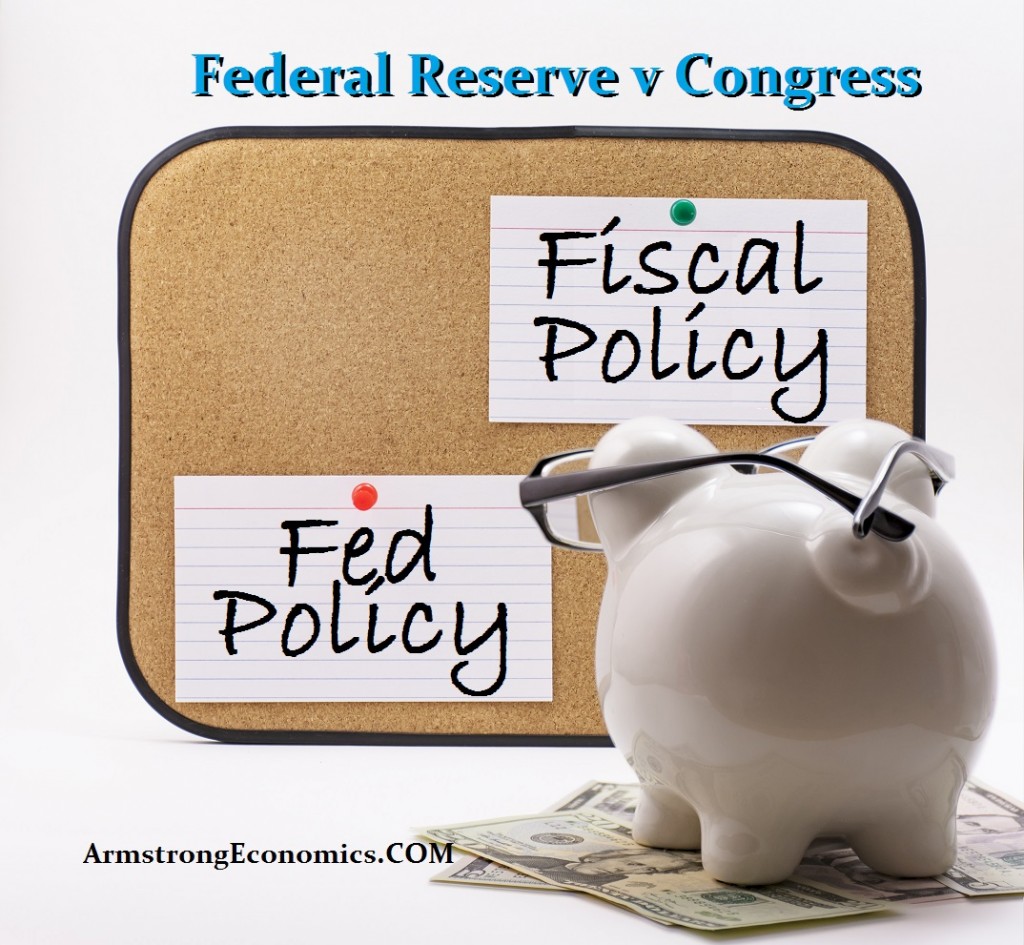Zero percent interest rates have created the largest bubble in human history, when it bursts it will be worse than 1929.
Home » Posts tagged 'Financial Stability'
Tag Archives: Financial Stability
Weekly Commentary: Framework for Monitoring Financial Stability
Weekly Commentary: Framework for Monitoring Financial Stability
The “neutral rate” framework is problematic. Back in early October, the Fed was almost three years into its “tightening” cycle (first rate increase in December 2015). Yet the Atlanta Fed GDP Forecast was signaling 4% growth; consumer confidence was near decade highs; manufacturing indices were near multi-year highs; corporate Credit conditions remained quite loose; and WTI crude had just surpassed $75 a barrel.
…click on the above link to read the rest of the article…
Global Oil Price Deflation 2018 and Beyond
Global Oil Price Deflation 2018 and Beyond

Photo Source wongaboo | CC BY 2.0
One of the key characteristics of the 2008-09 crash and its aftermath (i.e. chronic slow recovery in US and double and triple dip recessions in Europe and Japan) was a significant deflation in prices of global oil. After attaining well over $100 a barrel in 2007-08, crude oil prices plummeted, hitting a low of only $27 a barrel in January 2016. They slowly but steadily rose again in 2016-17 and peaked at about $80 a barrel this past summer 2018. Now the retreat has started once again, falling to a low of $55 in October and remain around $56 today, likely to fall further in 2019 now that Japan and Europe appear entering yet another recession and US growth almost certainly slowing significantly in 2019. With the potential for a US recession rising in late 2019 oil price deflation may continue into the near future. What will this mean for the global and US economies?
The critical question is what is the relationship between global oil price deflation, financial instability and crises, and recession–something mainstream economists don’t understand very well? Is the current rapid retreat of oil prices since August 2018 an indicator of more fundamental forces underway in the global and US economy? Will oil price deflation exacerbate, or even accelerate, the drift toward recession globally now underway? What about financial asset markets stability in general? What can be learned from the 2008 through 2015 experience?
In my 2016 book, ‘Systemic Fragility in the Global Economy’ and its chapter on deflation’s role in crises, I explained that oil is not just a commodity but, since the 1990s, has functioned as an important financial asset whose price affects other forms of financial assets (stocks, bonds, derivatives, currencies, etc.).
…click on the above link to read the rest of the article…
Government Are Just Going Broke
 The events in the Senate concerning the nomination of Brett Kavanaugh’s illustrates that career politicians are destroying our way of life because they are so intent on just beating the opposite party that nobody is paying attention to the real problems we are staring at straight in its eyes. We face a very dark future because there is nobody home in government. They are indeed like the old Pink Floyd song – Comfortably Numb! Is there anyone in there? Is anyone home?
The events in the Senate concerning the nomination of Brett Kavanaugh’s illustrates that career politicians are destroying our way of life because they are so intent on just beating the opposite party that nobody is paying attention to the real problems we are staring at straight in its eyes. We face a very dark future because there is nobody home in government. They are indeed like the old Pink Floyd song – Comfortably Numb! Is there anyone in there? Is anyone home?
In Canada, a report has come out and made it clear that the “wolf is truly at provinces’ doors”, which is warning that the Canadian provinces’ fiscal position, collectively, is not sustainable over the long-term. They will raise taxes further and desperately punish all of use for their mismanagement and failures. They have destroyed our future and they will NEVER prevent a crisis because they ignore everything that is common sense.
I have tried very hard over the years to address the issue and show them this is a disaster that a 4-year-old with a pocket calculator can forecast. There is NO WILL to change and the parties are at each other’s throats so there can never be any bipartisan cooperation to save our future. We just have to Crash & Burn. The political system is simply incapable of actually managing the economy with career politicians for they are more interested in defeating the opposition to retain their jobs. We come last on the list of considerations.
As interest rates continue to rise, we are facing the crisis of all time. The central banks must “normalize” interest rates for the entire pension system is going belly-up. This is pitting fiscal policy against central bank policy. Government around the global have enjoyed the lowest interest rates in 5,000 years. They never reformed but spent even more. These two policies are now going to confront each other going into 2021.
Bob Dylan as Economic Prophet
Bob Dylan as Economic Prophet
Change is the defining feature of our modern age, from science to business to politics, both in its extraordinary speed and magnitude. But you would never know it when surveying today’s financial market landscape. We are also living in the age of government-mandated financial repression—which has created a forced, false financial stability. These exist like two contradictory, parallel universes.
Thanks to almost a decade of unprecedented market interventions by global central banks (which have collectively acquired assets totaling over $20 trillion), everywhere you look there is repression of yields, repression of market volatility, and their side effects of exploding asset valuations (to heights not seen since shortly before past historic crashes), financial-engineered debt, leverage, stock-buybacks, cryptocurrency-insanity, “short volatility” and all manner of reckless yield-chasing investment schemes. This is an age of massive artificial economic imbalances and systemic risks.
Such powerful interventions hurt the weakest and benefit the strongest (the holders of assets) as they create unsustainable, destructive distortions that ultimately lead to catastrophe. This is a universal historical theme, perhaps nowhere better chronicled than by Bob Dylan starting back in the early 1960s. And underlying Dylan’s theme has been a prophetic message, one that speaks uncannily to today’s incoherently changeless and riskless market climate: Change is irrepressible, whether we accept it or (especially) even if we do not; “the times they are a-changin’.”
…click on the above link to read the rest of the article…
IMF Stress Tests Find $280 Billion Black Hole In Chinese Banks’ Capital
IMF Stress Tests Find $280 Billion Black Hole In Chinese Banks’ Capital
The IMF released a new analysis on the instability stability of the Chinese financial system. Speaking to the media in an online briefing, some of the insights from Ratna Sahay, deputy director of the IMF’s Monetary and Capital Markets Department, hardly advanced our knowledge much.
Sahay noted that “Risks are large. Having said that, the authorities are really aware of risks and they are working proactively to contain these risks.”
That’s why the authorities are finally racing to contain the worst excesses of China’s insane credit boom following October’s Party Congress, for example overhauling the $15 trillion shadow banking and asset management sector. As we noted on the latter, the new measures don’t take effect until the end of June 2019, no doubt reflecting the enormity of the problems uncovered by Chinese regulators.
Sahay pointed to three main risks: credit growth, the complex and opaque financial system and implicit guarantees which “encourage excessive risk-taking” (think WMPs).
However, the IMF does a better job in explaining why a massive financial crisis in China is all but inevitable – the conflicting needs of social stability versus financial stability. According to Reuters.
But the near-term prioritisation of social stability seems to depend on credit growth to sustain financing to firms even when they are non-viable, it said. “The apparent primary goals of preventing large falls in local jobs and reaching regional growth targets have conflicted with other policy objectives such as financial stability,” the report said. “Regulators should reinforce the primacy of financial stability over development objectives,” the fund said.
Too late.
…click on the above link to read the rest of the article…
The 75 Trillion Dollar Shadow Banking System Is In Danger Of Collapsing
The 75 Trillion Dollar Shadow Banking System Is In Danger Of Collapsing
 Keep an eye on the shadow banking system – it is about to be shaken to the core. According to the Financial Stability Board, the size of the global shadow banking system has reached an astounding 75 trillion dollars. It has approximately tripled in size since 2002. In the U.S. alone, the size of the shadow banking system is approximately 24 trillion dollars. At this point, shadow banking assets in the United States are even greater than those of conventional banks. These shadow banks are largely unregulated, but governments around the world have been extremely hesitant to crack down on them because these nonbank lenders have helped fuel economic growth. But in the end, we will all likely pay a very great price for allowing these exceedingly reckless financial institutions to run wild.
Keep an eye on the shadow banking system – it is about to be shaken to the core. According to the Financial Stability Board, the size of the global shadow banking system has reached an astounding 75 trillion dollars. It has approximately tripled in size since 2002. In the U.S. alone, the size of the shadow banking system is approximately 24 trillion dollars. At this point, shadow banking assets in the United States are even greater than those of conventional banks. These shadow banks are largely unregulated, but governments around the world have been extremely hesitant to crack down on them because these nonbank lenders have helped fuel economic growth. But in the end, we will all likely pay a very great price for allowing these exceedingly reckless financial institutions to run wild.
If you are not familiar with the “shadow banking system”, the following is a pretty good definition from investing answers.com…
The shadow banking system (or shadow financial system) is a network of financial institutions comprised of non-depository banks — e.g., investment banks, structured investment vehicles (SIVs), conduits, hedge funds, non-bank financial institutions and money market funds.
How it works/Example:
Shadow banking institutions generally serve as intermediaries between investors and borrowers, providing credit and capital for investors, institutional investors, and corporations, and profiting from fees and/or from the arbitrage in interest rates.
Because shadow banking institutions don’t receive traditional deposits like a depository bank, they have escaped most regulatory limits and laws imposed on the traditional banking system. Members are able to operate without being subject to regulatory oversight for unregulated activities. An example of an unregulated activity is a credit default swap (CDS).
These institutions are extremely dangerous because they are highly leveraged and they are behaving very recklessly. They played a major role during the financial crisis of 2008, and even the New York Fed admits that shadow banking has “increased the fragility of the entire financial system”…
…click on the above link to read the rest of the article…








